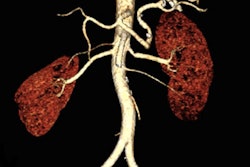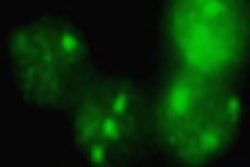Children often undergo multiple CT exams when admitted with traumatic injuries to hospital emergency departments. But chest CT studies might not be needed for many pediatric trauma patients if an abdominopelvic CT scan is ordered and includes images of the lower chest, according to a study published online in Pediatric Radiology.
Researchers from the Children's Hospital at Vanderbilt in Nashville, TN, reached this conclusion after retrospectively evaluating the records of 235 children admitted to the hospital's level I trauma center between September 2006 and March 2008. The children all had a chest CT in conjunction with an abdominal and pelvic CT. More than half also had a chest radiograph within 24 hours of the CT exams (Pediatric Radiology, February 24, 2010).
The objective of the study was to assess the clinical impact of the chest CT exam compared with chest x-rays in managing pediatric trauma. Lead author Dr. Rina Patel, of the Vanderbilt University School of Medicine, and colleagues determined that chest CT scans showed more positive findings, with 63.8% of CT exams showing at least one positive finding, compared with 38.3% of chest radiographs.
During their evaluation, the researchers determined that the majority of thoracic vertebral fractures and all pneumothoracies requiring chest tube placement could be identified in the abdominopelvic CT scan. If the images from this CT scan had been reviewed prior to ordering a chest CT scan for hemodynamically stable patients, only 24% of the patients in this cohort would have needed the exam.
The authors pointed out that although a chest CT exam is the preferred study to evaluate traumatic aortic injury, this is a rare injury for children. In fact, none of the patients being studied were diagnosed with this injury.
The most common findings identified from the chest CT exams included pulmonary consolidations, pneumothorax/hemothorax, and rib fractures. The only abnormal finding demonstrated exclusively by a chest CT exam was vertebral injury. Its greatest utility was in detecting occult thoracic spine fractures.
Pediatric CT chest scans should be reserved for patients in whom the mechanism of injury or cardiovascular status suggests spinal or vascular injury, according to the authors.
By Cynthia E. Keen
AuntMinnie.com staff writer
April 12, 2010
Related Reading
Low-dose CT may be suitable for pediatric fracture diagnosis, March 7, 2010
CT beats x-ray for pediatric cervical spine trauma, February 4, 2010
Dose can be reduced by 75% in pediatric chest CT exams, June 18, 2009
ARRS study: Child's body shape can reduce CT dose, April 23, 2009
Pediatric CT dose drops with breast shields plus tube modulation, February 26, 2008
Copyright © 2010 AuntMinnie.com




















